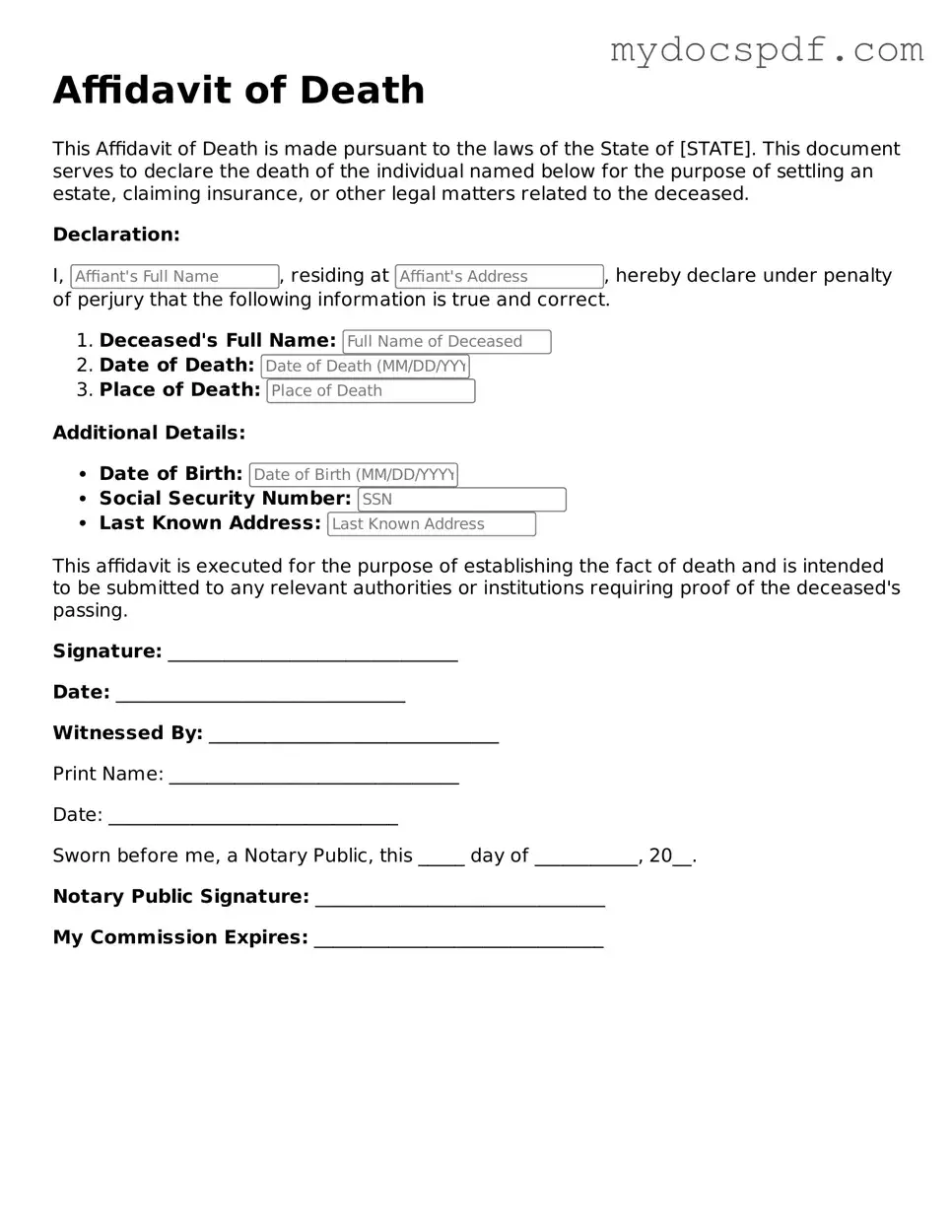Attorney-Approved Affidavit of Death Template
The Affidavit of Death form is a legal document used to officially declare that an individual has passed away. This form serves various purposes, including the settlement of estates and the transfer of assets. Understanding its significance can help streamline the process during a difficult time.
Access Editor Here
